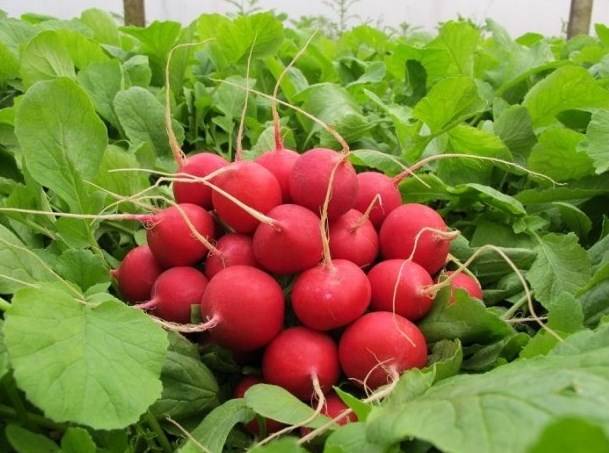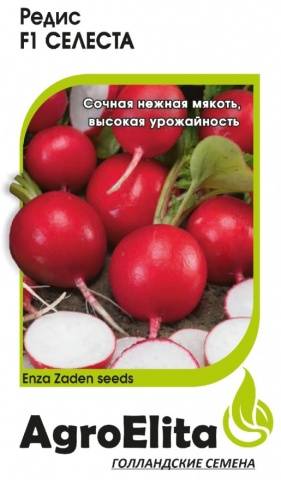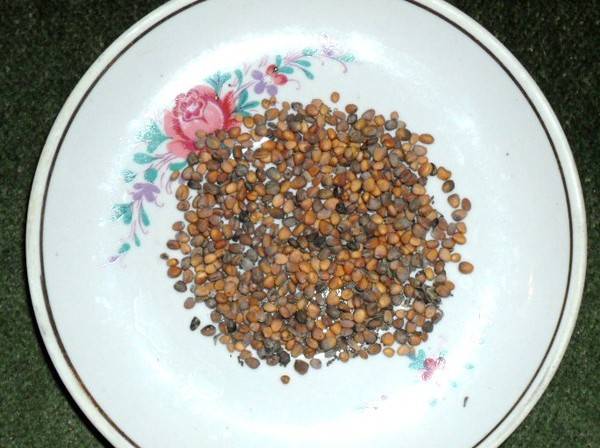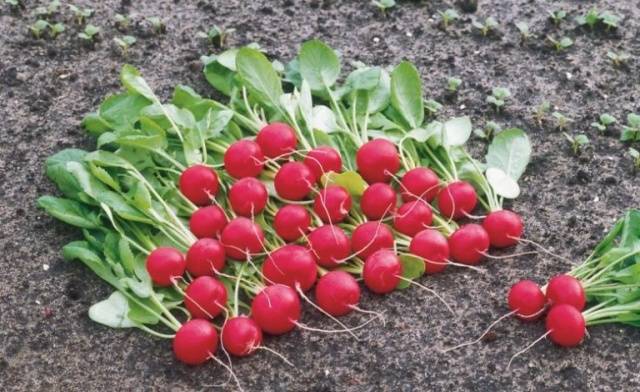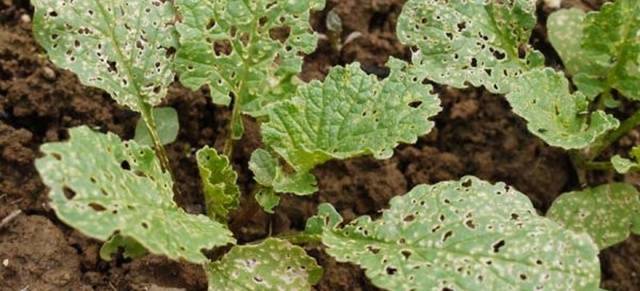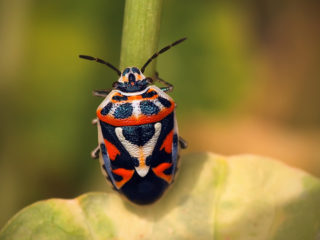Content
A hybrid of Celeste F1 radish, which stands out for its early ripening period, up to 20-25 days, and popular consumer qualities, was created by breeders of the Dutch company "EnzaZaden". In Russia, it has been introduced into cultivation for personal plots and agro-industrial cultivation since 2009. During this time, Celeste radish has become popular.
Description
The radish hybrid is characterized by a compact rosette of tops, bright green leaves grow short. Root crops of the Celeste variety, when fully ripe, reach 4-5 cm in diameter. Rounded, with a thin tail and shiny bright red skin. The pulp is dense, juicy, with a characteristic radish smell. The taste of Celeste root crops is pleasant, has an appetizing bitterness, but slightly spicy. With a good agricultural background in 25 days, radish gains 25-30 g. Get 3-3.5 kg of crispy spring delicacies from 1 sq. M. m.
Advantages and disadvantages
Dignity | disadvantages |
Early maturity | The plant does not develop well on heavy, saline and acidic soils |
High yield and marketability of the Celeste hybrid radish variety: simultaneous ripening, uniformity of root crops, attractive appearance, pleasant expected taste | Demanding soil fertility, depending on the crops of the predecessors. Plant development and yield drops sharply if the area was previously occupied by any type of cabbage and other cruciferous species, as well as beets or carrots |
Easy maintenance. Celeste is a hybrid radish grown outdoors and in greenhouses. | Requires sufficient watering, but without waterlogging |
Transportability and storage duration of root crops of the Celeste hybrid |
|
Resistance of Celeste radish to shooting and flowering |
|
The Celeste hybrid is not prone to peronosporosis |
|
Seed preparation for sowing
Having bought the seeds of the Celeste hybrid in branded packaging from the manufacturing company, they are simply sown into the soil. Untreated seeds are recommended to be prepared and disinfected. Many gardeners have their own methods of processing radish seeds before sowing. The most popular is soaking in hot water or potassium permanganate.
- Radish seeds in a gauze bag are placed in a container with hot water: no more than 50 aboutC for 15-20 minutes;
- Soak in a pink solution of potassium permanganate also for 15-20 minutes;
- Then the seeds are dried and sown;
- In order for the seeds to germinate faster, they are kept for 24-48 hours in a damp cloth in a warm place;
- For the successful development of the Celeste variety, they practice soaking the seeds in solutions of growth stimulants according to the instructions.
Growing features
Celeste F1 radish is cultivated for spring and late summer or autumn sowing. The plant bears fruit best of all on loose sandy loam soils with a neutral acidity reaction - 6.5-6.8 Ph. Radish is not planted on the plots that were occupied by other root crops last year. Those gardeners who prefer to apply mineral fertilizers adhere to the recommended rate per 1 sq. m: 20 g of superphosphate, 100 g of potassium sulfate, 30 g of potassium magnesium, 0.2 g of boron. Fertilize the soil with humus - 10 kg per 1 sq. m.
In the open field
Radishes are sown on the plot in April or until mid-May in still wet soil. As a seasonal autumn vegetable, the Celeste radish is grown in late July or August, depending on the climatic conditions of the regions.
- Sowing grooves are made every 10-12 cm.Seeds are laid out with an interval of 4-5 cm to a depth of 2 cm. On dense soils, they are deepened by only 1-1.5 cm;
- Wells for seeds are also marked using seedling cassettes, where the bottoms are located according to a 5 x 5 cm pattern;
- Watering is carried out regularly so that the soil does not dry out, about 10 liters per 1 sq. m, if watered daily;
- They are fed 2 weeks after germination with chicken manure infusion in a ratio of 1:15, watering between rows.
In the greenhouse
In indoor conditions, the Celeste radish is sown in winter or at the end of March, beginning of April. You need to take care of the introduction of humus for plowing.
- In the heat, radishes are watered daily at 5-7 liters per square meter;
- In cloudy damp weather, it is enough to water with the same rate every 2-3 days;
A week and a half after germination, the Celeste hybrid is fertilized with a mullein solution: 200 g per 10 l of water, adding 1 teaspoon of carbamide.
Growing problems
Problem | Causes |
Root crops of Celeste radish small, coarse, fibrous | Late sowing: at temperatures above 22 ° C, radishes develop worse. Lack of moisture in the upper soil layer in the first 2 weeks of root crop growth |
Plant arrows | At the beginning of growth, during the first 10-15 days, the weather is below 10 oC or above 25 oC. The seeds are sown too thick |
Too dense and hard root vegetables | After rains or irregular watering, a crust formed in the garden |
Celeste radish bitter | The plant developed for too long through non-compliance with the rules of agricultural technologies: poor soil, lack of watering |
Diseases and pests
The hybrid variety of Celeste radish has developed immunity against many diseases. Gardeners note that he practically does not get sick. Only through violation of the rules of watering can fungal rot develop.
Diseases / pests | Signs | Control measures and prevention |
White rot occurs when there is an excess of moisture at temperatures above 22 ° C | Root browning, soft tissue with white spots | The radish is removed. Root crops are not sown in the garden for 3 years. In the greenhouse, the soil is disinfected |
Gray rot appears with excess moisture and a temperature of 15-18 oC | On brown spots, gray bloom | Every autumn, you should carefully remove all plant residues, observe crop rotation |
Viral mosaic is carried by aphids and weevils | The leaves are covered with patterned spots. The plant does not develop | There is no cure. Prophylactically follow growing recommendations |
Actinomycosis develops in hot, dry weather | Brown spots and spots that turn into growths on the root crop | Compliance with crop rotation |
The black leg occurs more often in the greenhouse when the soil and air are waterlogged | The plant rots at the base. The entire crop may die | Regular watering without excess, airing, crop rotation |
Cabbage flea | Leaves of young plants in holes. Seedlings may die | Dusting with wood ash and ground pepper. The latest folk invention: spraying with Bim shampoo, which is designed to fight fleas in dogs (50-60 ml per 10 liters of water) |
Conclusion
Hybrid is a profitable solution for home farming. A crop with minimal maintenance, which includes loosening the soil and regular, moderate watering, is ensured. The first spring root vegetables will diversify the family menu.
